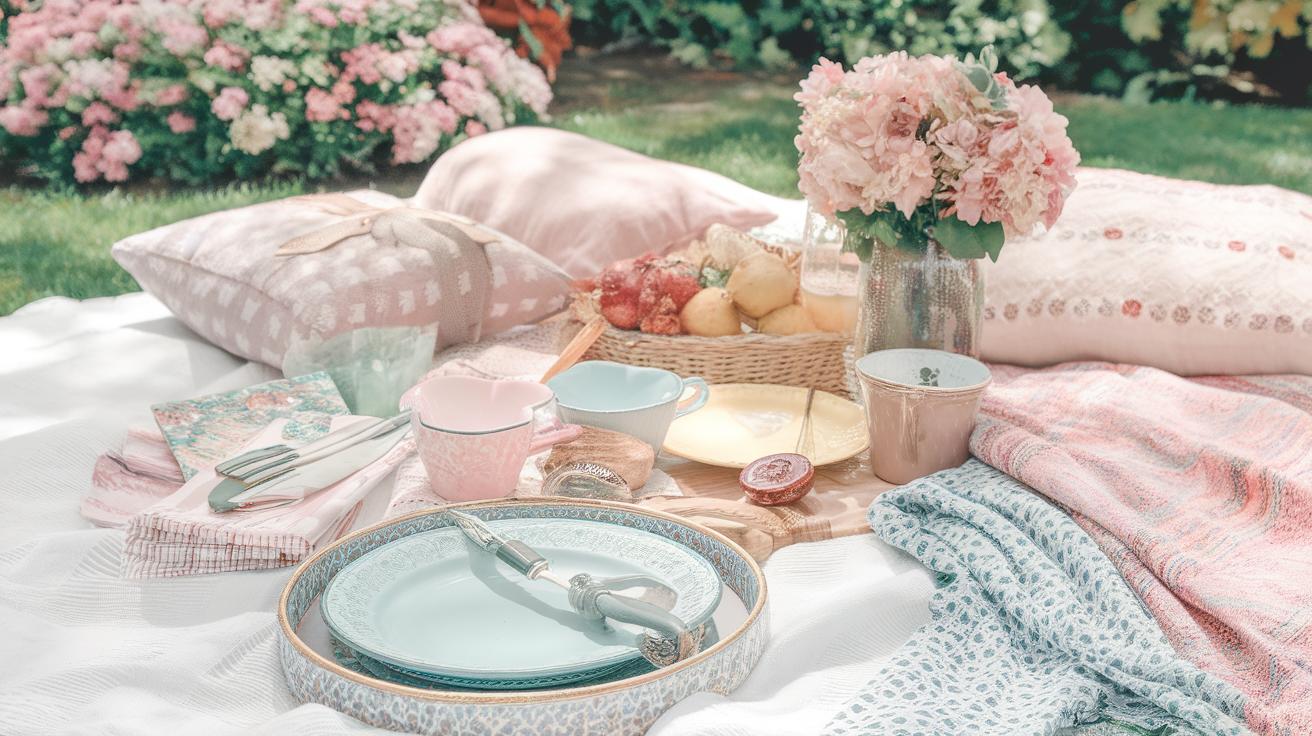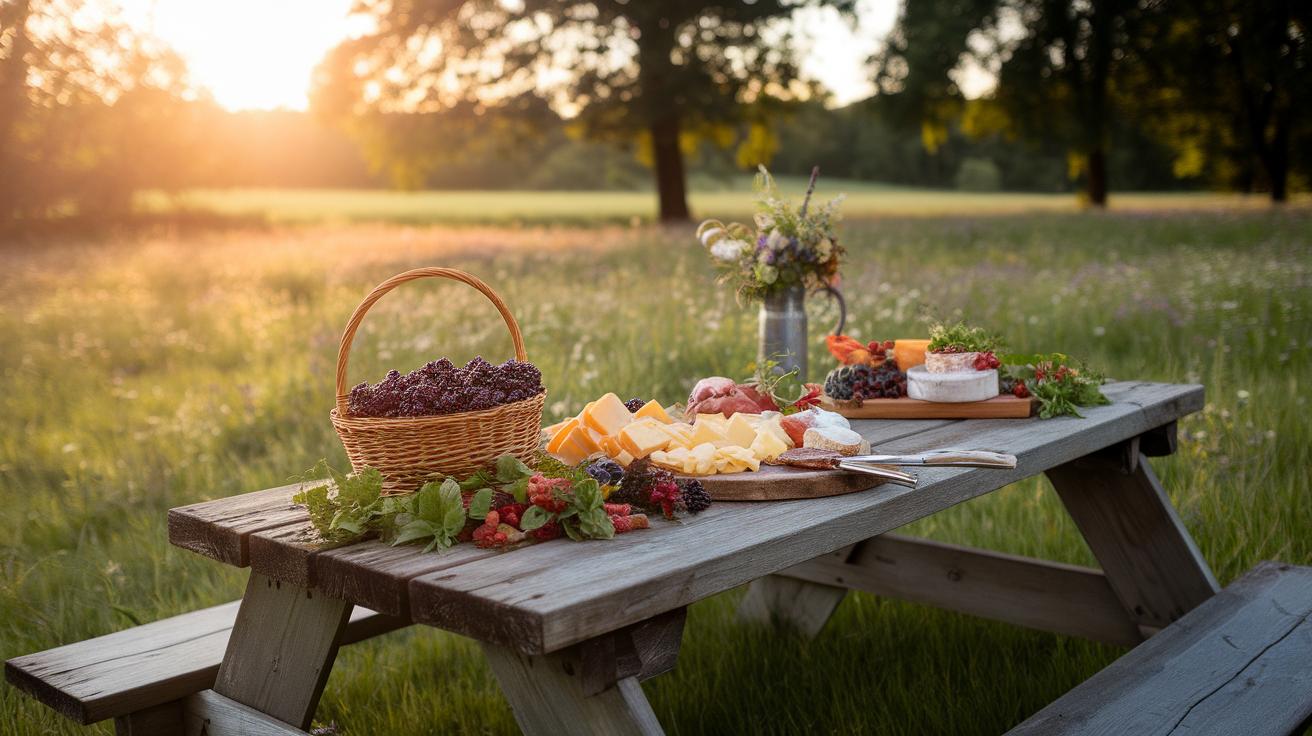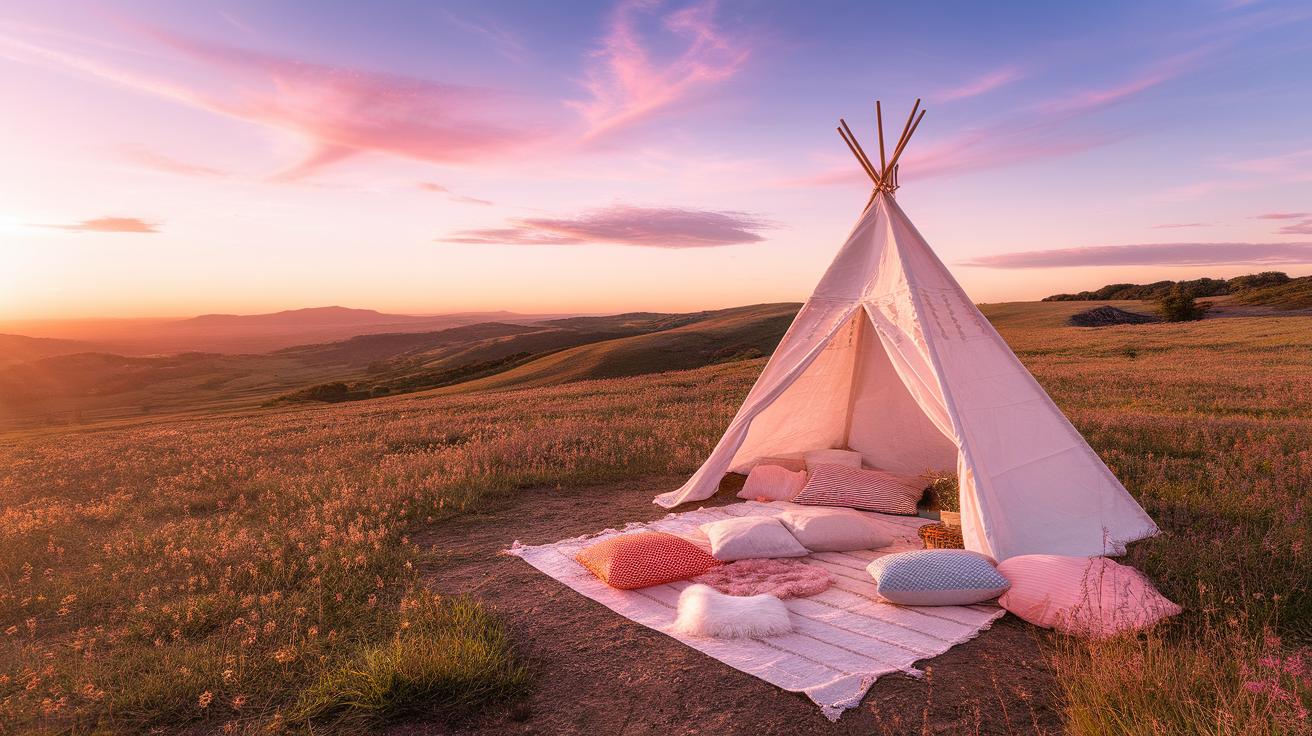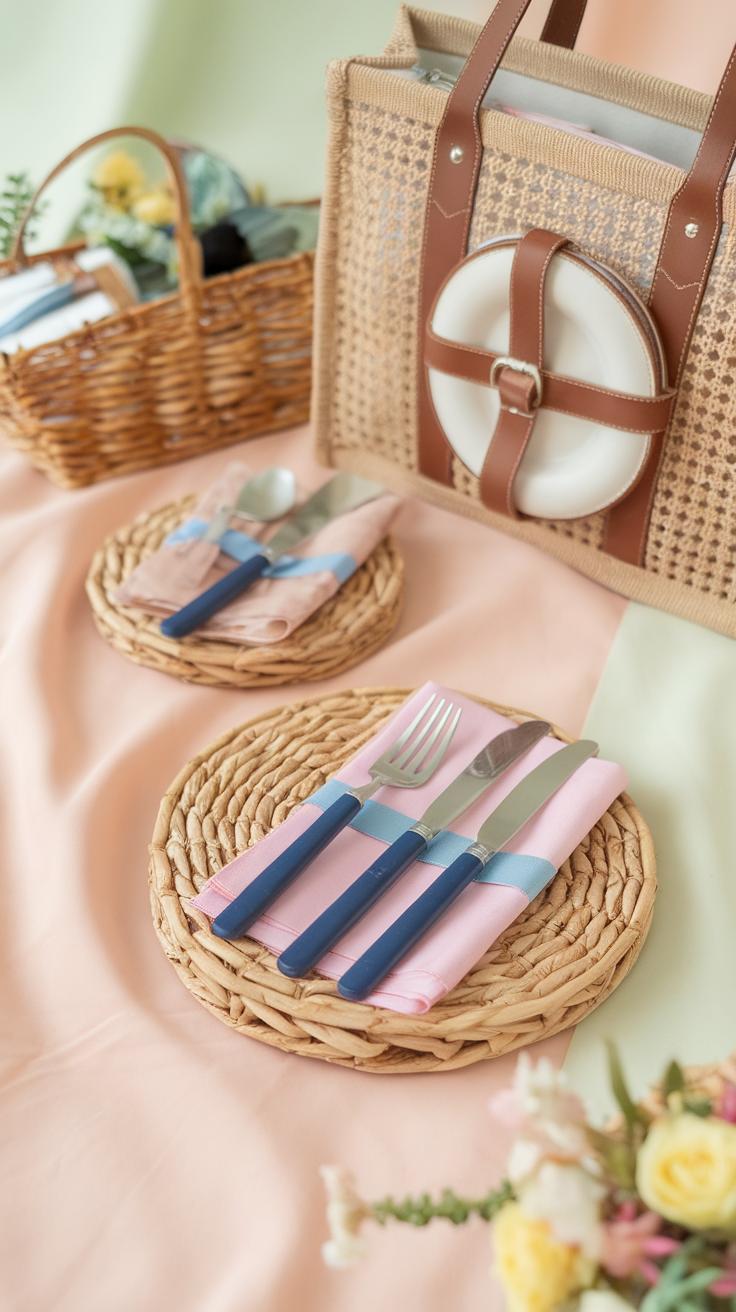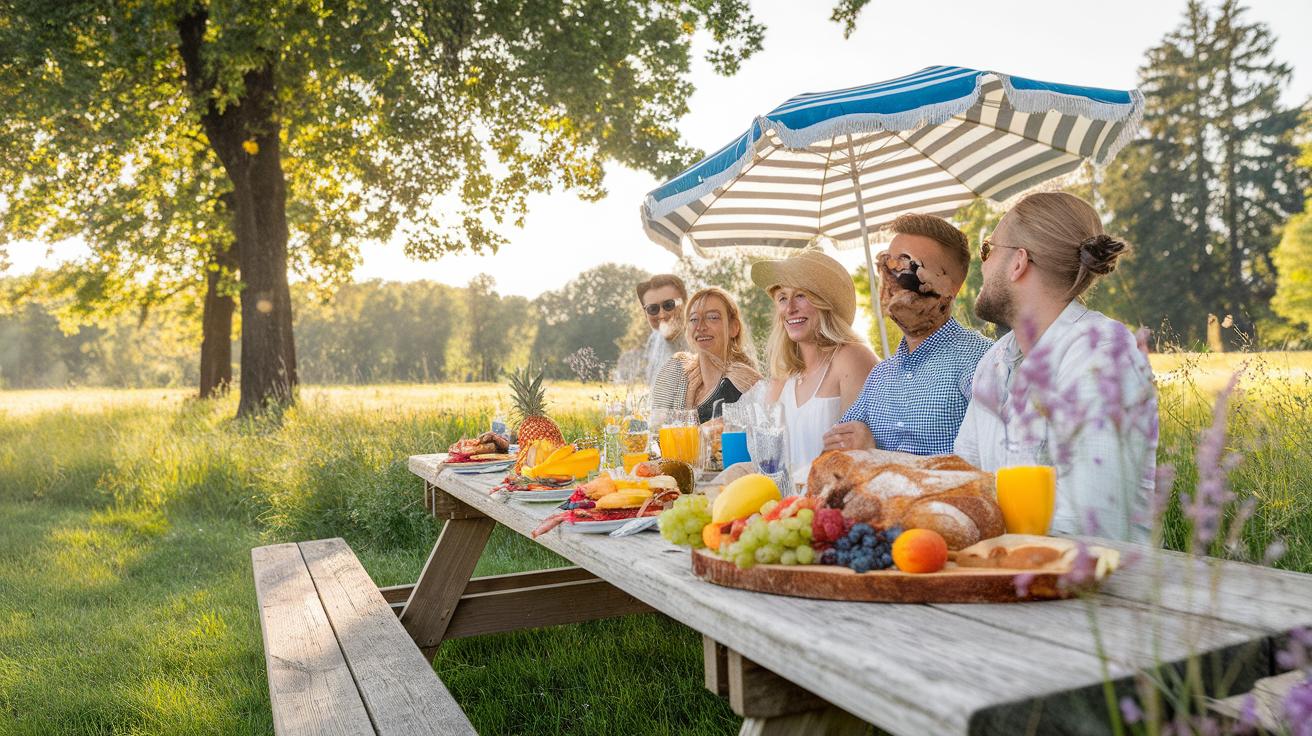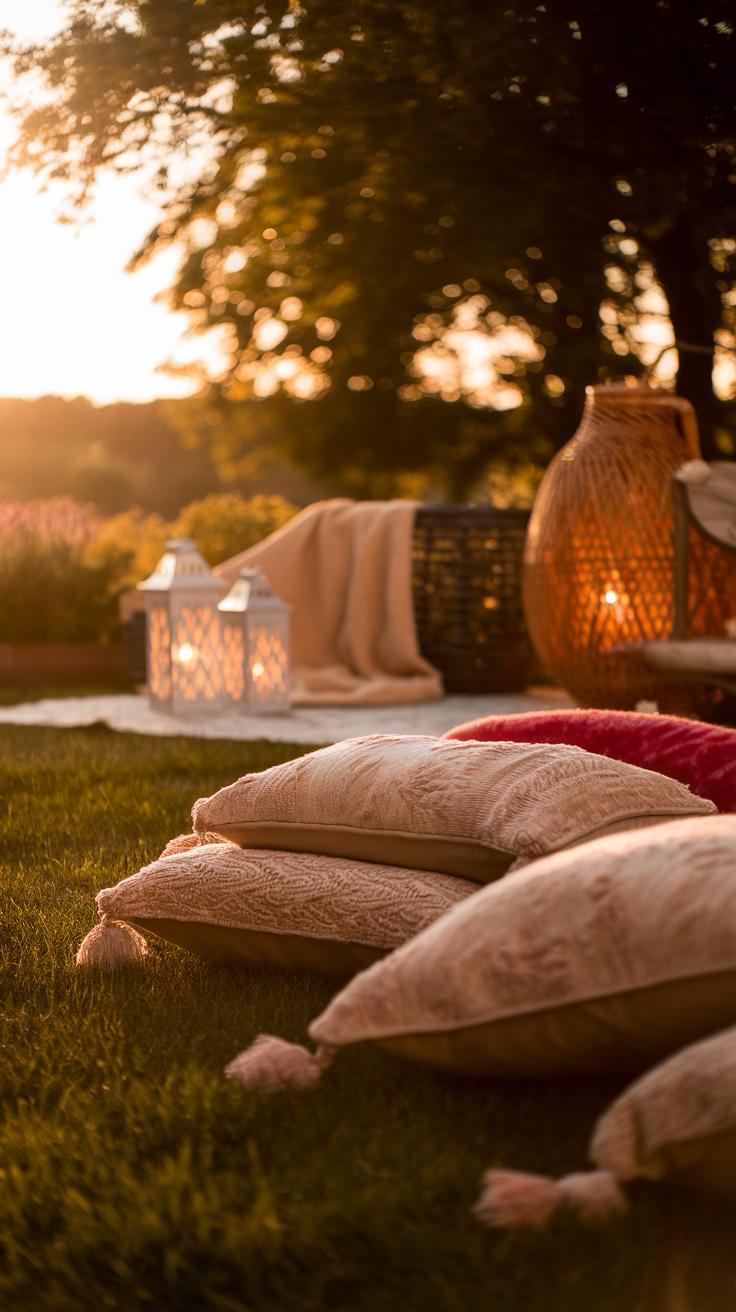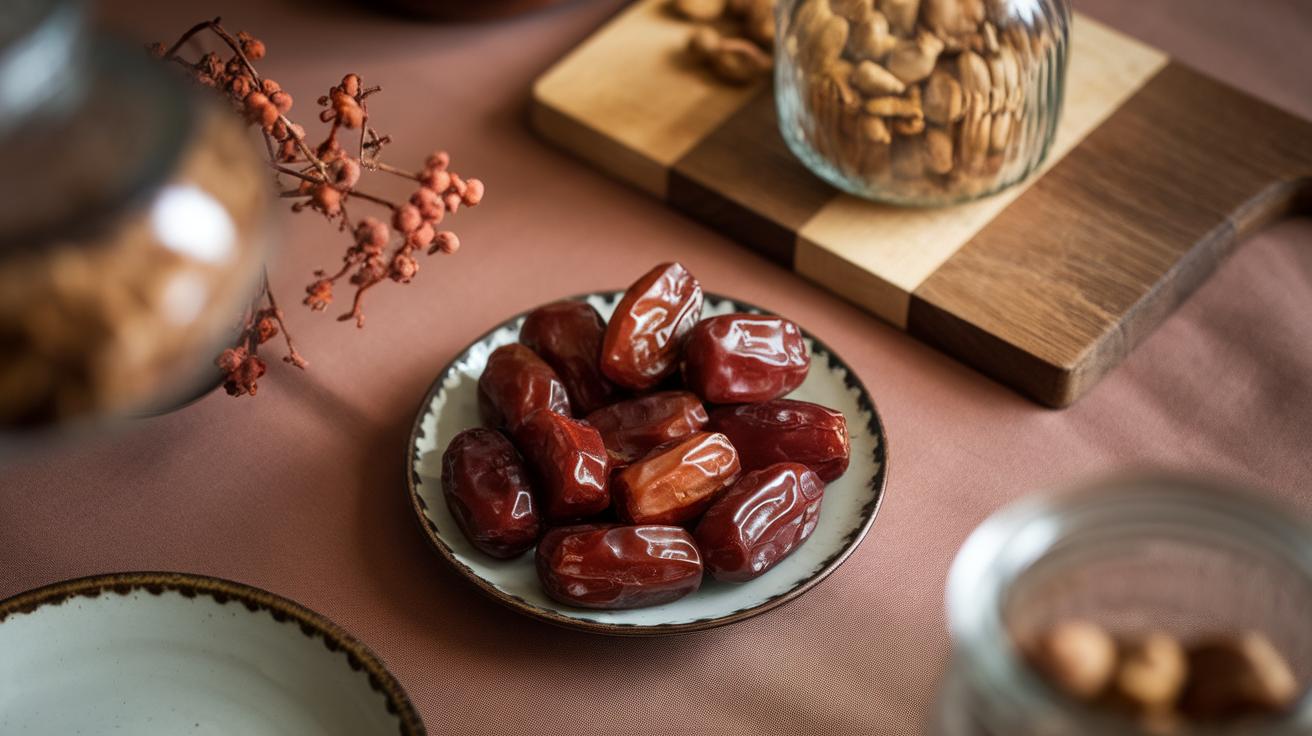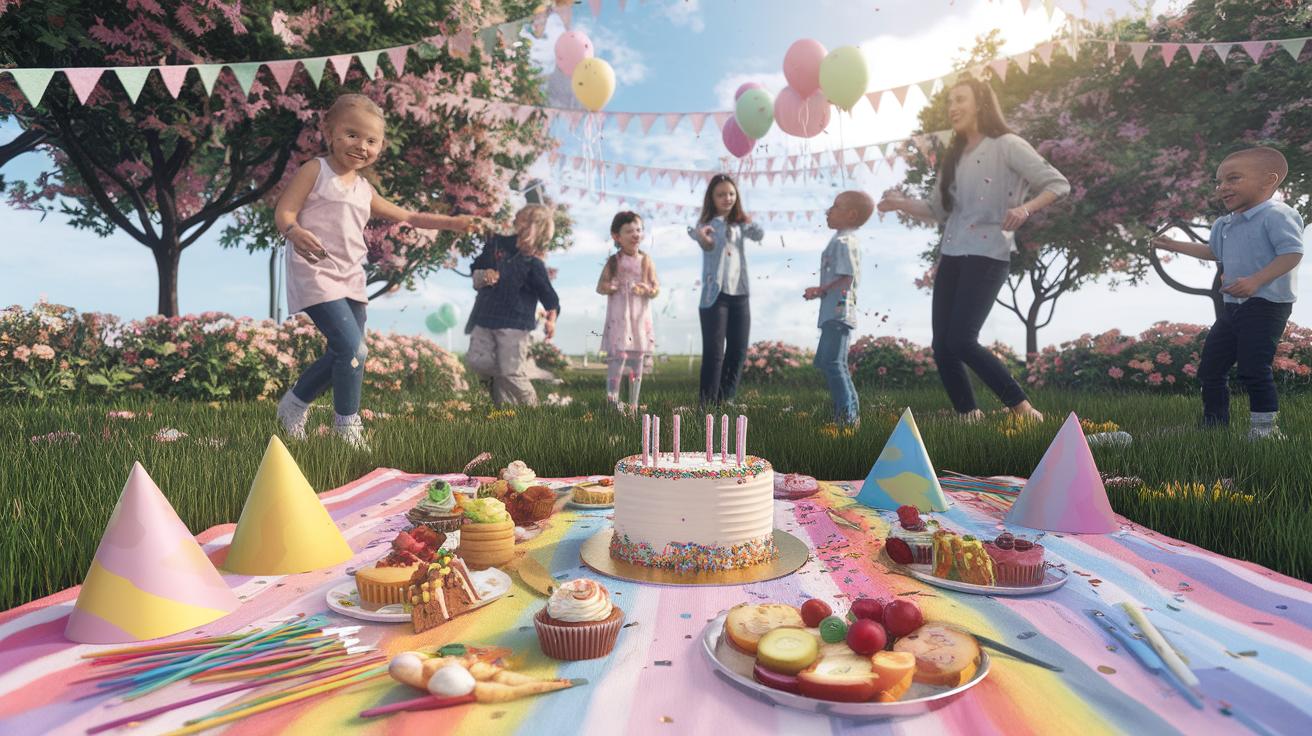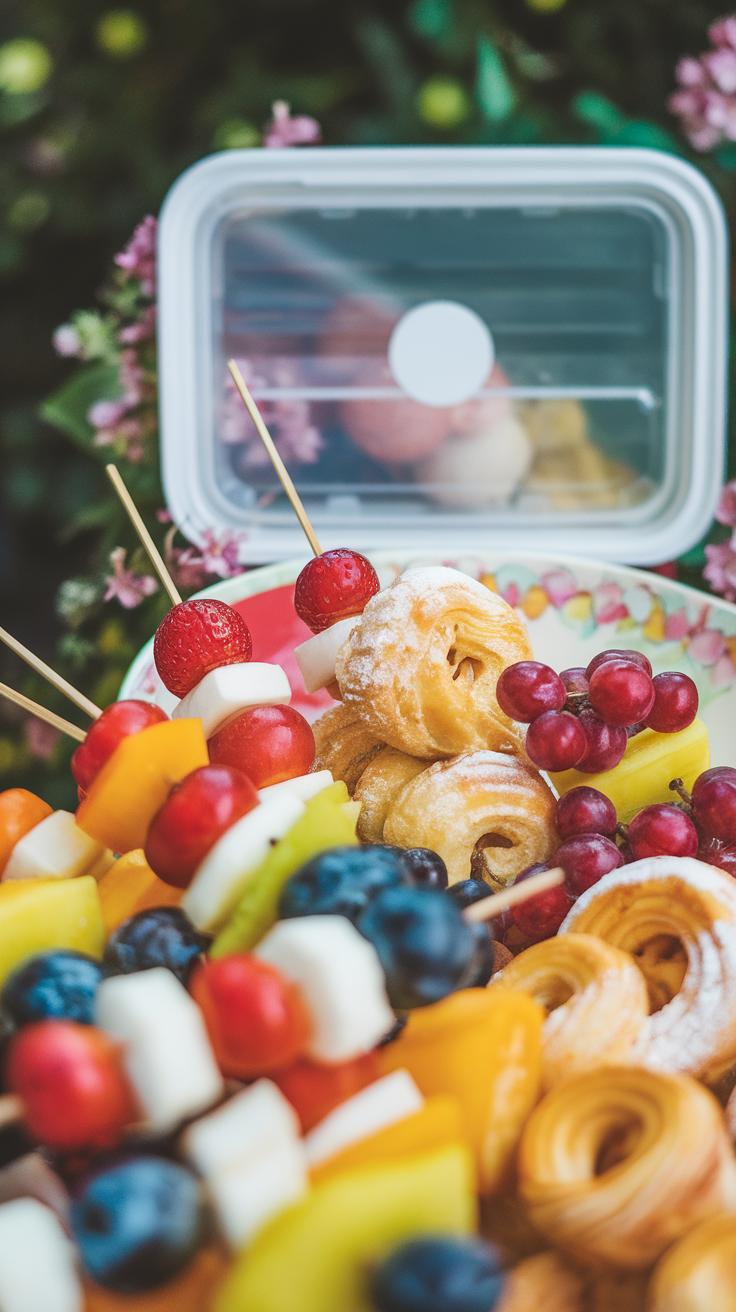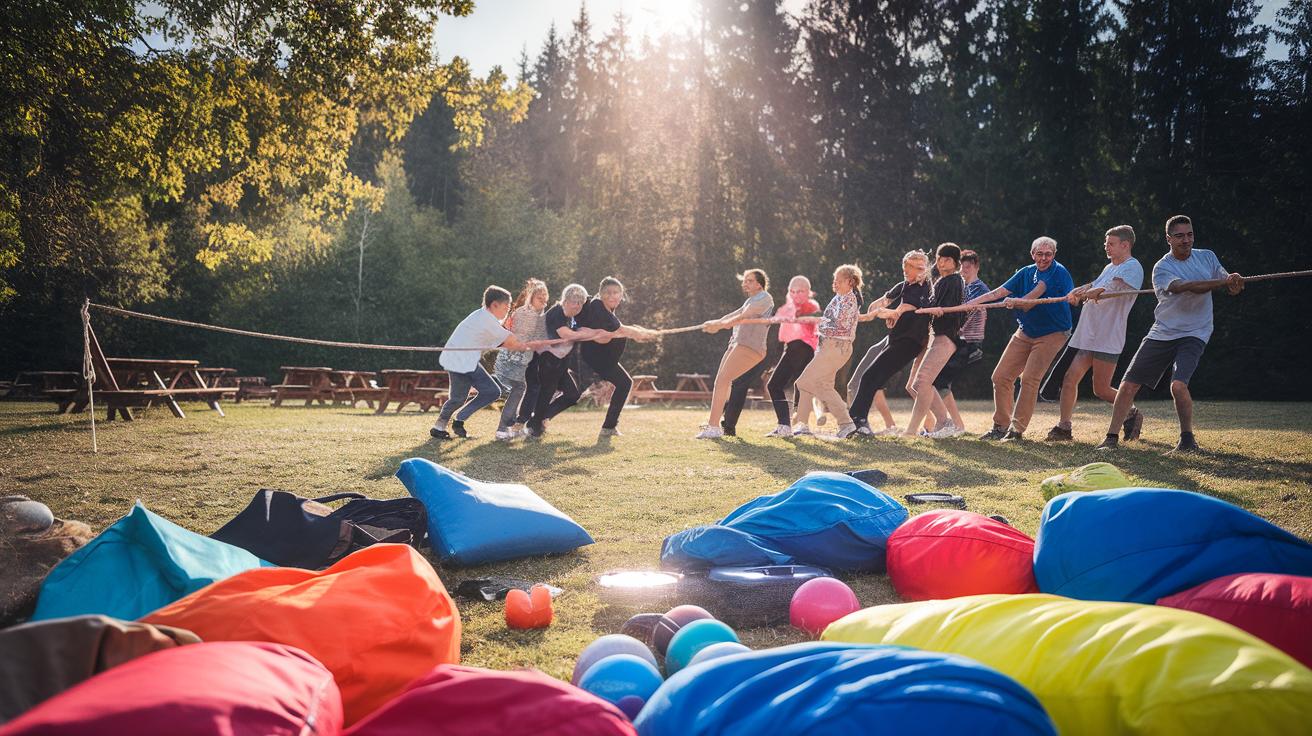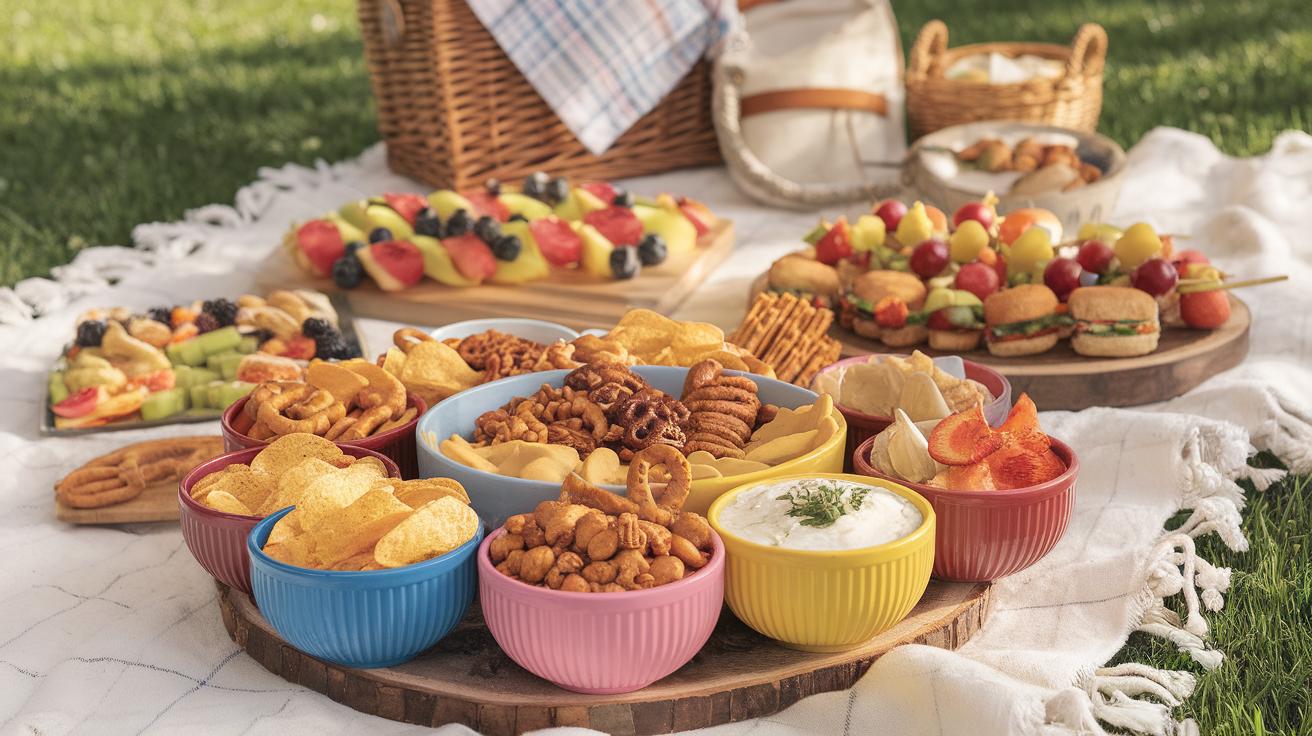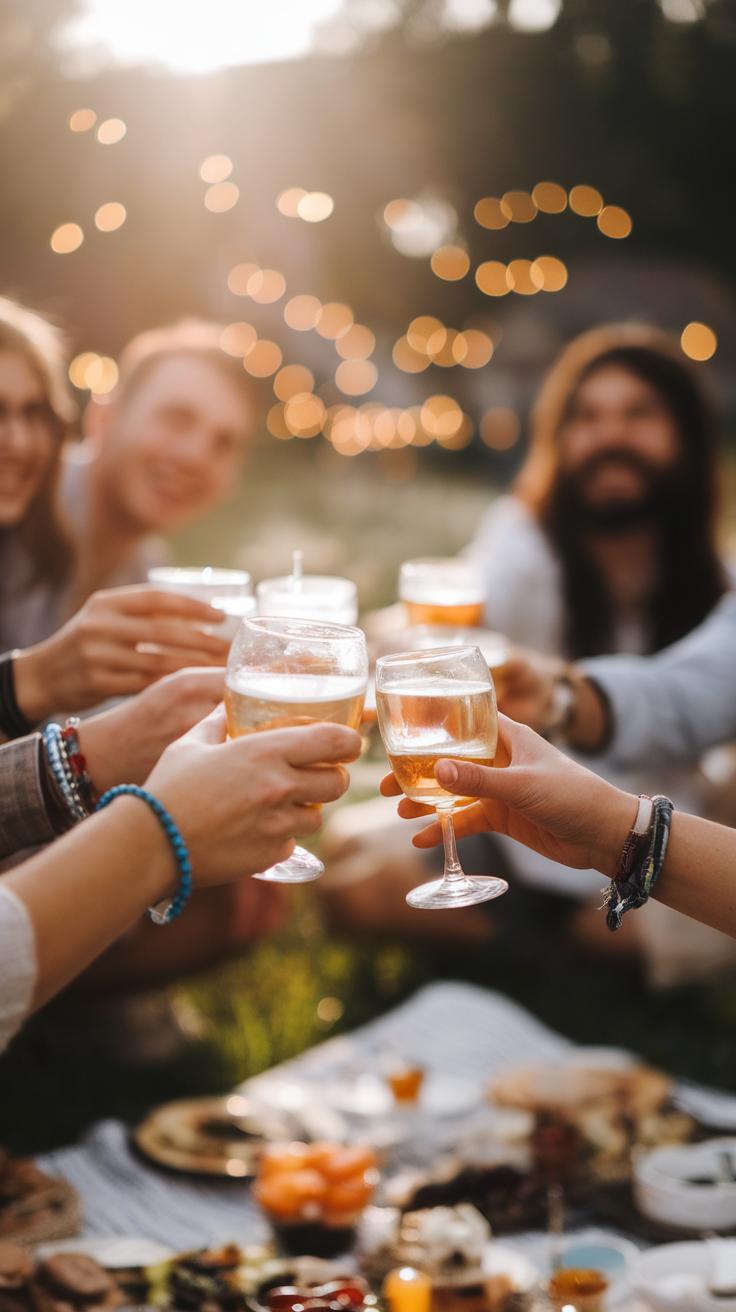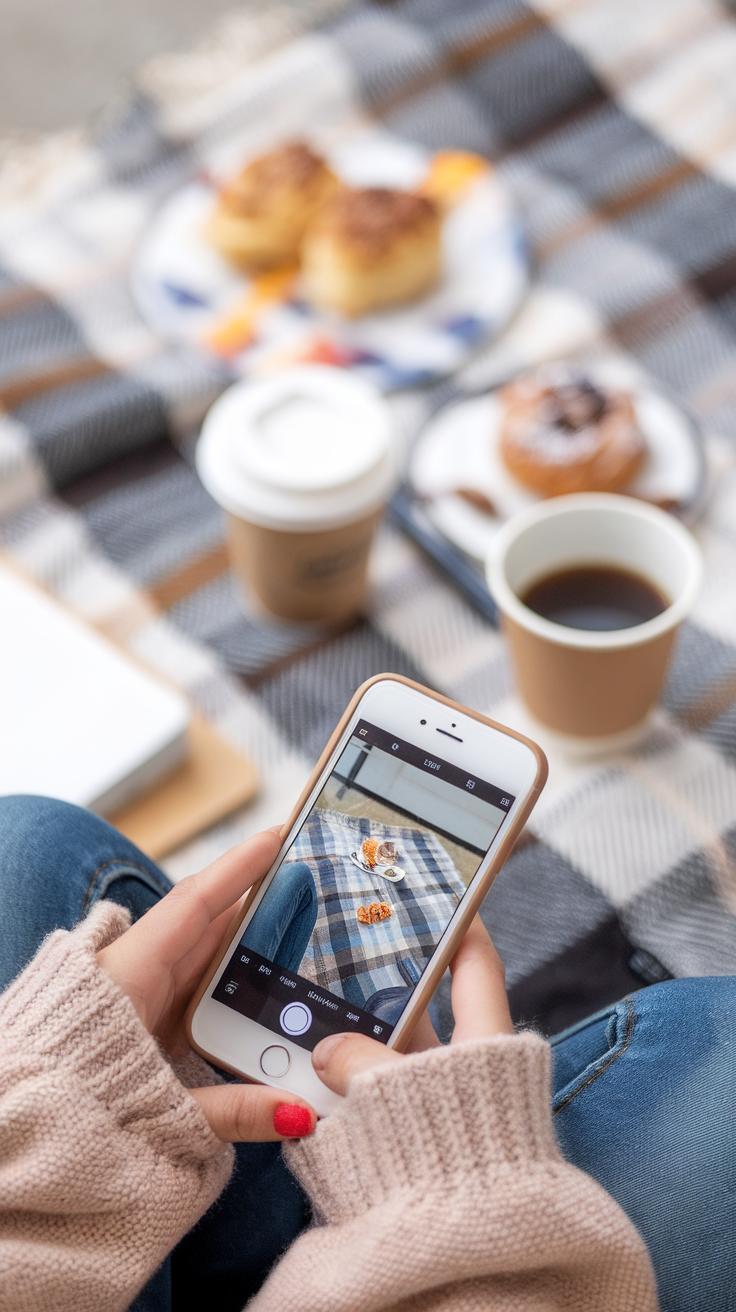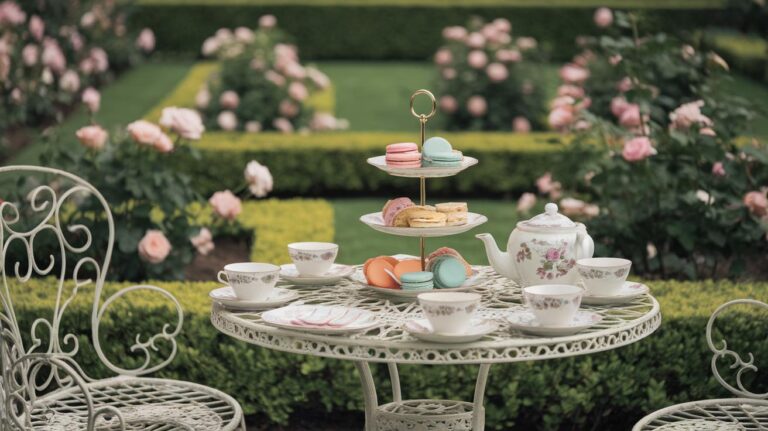Introduction
Planning a picnic involves more than just packing food. It is about creating a setting that invites comfort and joy while enjoying the outdoors. You can transform a simple meal into an event full of style and memorable moments that deserve to be captured and shared. Understanding the elements that make a picnic setting appealing helps you craft a moment worth remembering.
Think about your favorite picnic spots or the images that inspire you. What makes them special? Combining practical tips with creative ideas, this article guides you through setting up a picnic that balances function and fashion. Learn how to choose your location, set up your area with aesthetics in mind, and prepare the right foods. Engage your senses and your followers with pictures that tell the story of your outdoor gathering.
Choosing the Perfect Picnic Location
Picking the right spot for your picnic shapes how much you and your guests enjoy the experience. Think about what kind of vibe you want. Parks offer wide open spaces and shade, ideal for group gatherings. Lakesides provide calm water views that add a peaceful feeling. Beaches create a relaxed mood with sand and waves, while gardens bring floral colors and well-kept scenery. Each setting has something unique to offer.
Consider what you want to see behind your shots. Do you prefer natural scenes or more structured settings? Also, think about privacy. A busy place might make photos tricky but adds energy. Quiet spots can feel intimate but might lack variety in visuals.
Ask yourself: Where would you feel most comfortable and inspired to relax and snap photos? Your choice matters for both the atmosphere and the look of your photos.
Assessing Accessibility and Comfort
Before finalizing your spot, check how easy it is to get there. How far is the parking? Is it close to public transport if some guests don’t drive? Think about the path to your picnic area—is it smooth or rough? Carrying baskets and blankets over uneven ground can be tiring.
Look for nearby restrooms and water fountains. These amenities make the day more convenient, especially for families. Shade is crucial on sunny days. Find trees or covered shelters to avoid discomfort and protect your setup.
Also, consider where people will sit. Is the ground flat and clean? Will you need extra cushions or portable chairs? Thinking ahead about these details helps everyone stay comfortable and focused on having fun and taking great photos.
Finding Backdrops That Pop in Photos
Scan your location for elements that will make your photos stand out. Bright flowers add color and life. Trees with interesting shapes provide natural frames or shade. Water, like rivers or fountains, reflects light and gives depth to pictures.
Look beyond nature to features like benches, arches, or colorful walls. These can add style and structure to your frames. Try moving around to spot how light hits each background at different times of day.
Ask yourself which view would highlight your picnic setup best and how to arrange your items against it. Choosing a striking backdrop can turn a simple meal into an eye-catching image that feels fresh and inviting.
Selecting Your Picnic Essentials
Choosing the right accessories shapes your picnic’s success. Start with a blanket that balances comfort and style. Look for ones made from water-resistant fabric with vibrant patterns or neutral tones that complement nature. A sturdy picnic basket offers easy transport and an organized home for your items. Consider baskets with compartments for plates and cups to keep everything secure.
Utensils should be durable but visually appealing. Bamboo cutlery or stainless-steel sets in muted colors add a classy touch without fuss. You might also include stylish napkins or cloths that enhance your setup’s look while serving a purpose. For seating, portable options like foldable stools or cushions protect you from uneven ground and boost comfort.
Ask yourself which items you’ll genuinely use and which add to your picnic’s feel. This way, your setup will stay practical while looking great. Each element should serve a clear function and contribute to a cohesive outdoor dining experience.
Balancing Function with Style
Outdoor essentials must withstand natural elements and frequent use. Choose blankets made of sturdy materials like canvas or thick polyester that dry quickly and resist stains. Bamboo and metal utensils hold up well outside, avoiding flimsy plastic sets that break easily. Durable baskets crafted from rattan or treated wood provide structure and longevity.
Color selection affects your picnic’s mood. Earth tones and pastels blend well into a natural setting, while bold hues create eye-catching contrasts. Patterns like stripes or florals add personality without overpowering the scene. Designs that stay simple help your photos look timeless rather than cluttered.
When shopping, think about how each item’s appearance pairs with its function. Could a leather-trimmed basket hold your plates and drinks neatly while enhancing your setup’s charm? Does a waterproof blanket also offer padding for comfort? Items that achieve both goals make your picnic efficient and stylish.
Organizing for Convenience
Efficient packing transforms your picnic into a smooth, relaxing event. Use baskets with separate compartments or add small storage containers inside to keep forks, knives, and napkins tidy. Group similar items together to avoid digging through everything when you need something.
Wrap utensils in cloth napkins or hold them in dedicated pouches to keep things sanitary and easy to find. Stack plates and cups carefully to maximize space and prevent breakage. For snacks, resealable bags or airtight containers keep food fresh and prevent spills.
Think about your setup’s flow. Place items you reach for frequently, like drinks or napkins, on top or within quick reach. Organizing in this way saves time and keeps your area neat, making it easier to enjoy your meal without distractions.
Creating a Cozy and Inviting Atmosphere
Make your picnic space feel warm by layering different textiles. Use a thick blanket as your base, then add smaller patterned throws and cushions on top. Mixing textures—like soft cotton, woven fabrics, and even faux fur—creates comfort and visual interest.
Pay attention to color coordination. Choose a color palette that matches your surroundings or picnic theme. Soft, muted tones work well in nature, while bold colors can add energy and focus. Think about how colors interact to create harmony without overwhelming the space.
Lighting plays a big role after sunset. Place small lanterns or fairy lights around your area to cast a gentle glow. If you want to avoid harsh light, choose battery-operated candles or solar-powered lights. The right lighting extends your picnic time and adds a welcoming touch.
Choosing Comfortable Seating
Comfort matters, so offer a mix of seating options. Start with a large, soft blanket or rug to define your picnic area. Add thick cushions or floor pillows to invite guests to sit or lean back with ease. Foldable chairs can help those who prefer higher seating or have mobility needs.
Mixing different seating options lets everyone find their comfort zone. Stacking cushions can provide extra back support while using lightweight foldable stools saves space without sacrificing comfort. Think about the number of guests and their preferences before packing seating items.
Try coordinating your cushions and blankets by color or pattern to keep the look stylish. Choose breathable fabrics for warm weather and cozy textures for cooler days to make sure everyone feels relaxed throughout the meal.
Adding Decorative Touches
Small decorations help your picnic look put together and inviting. A simple flower arrangement in a mason jar or a small basket adds life and color. Pick seasonal flowers or wildflowers from nearby areas if possible.
Lanterns placed around your setup offer both decoration and soft light as the day fades. You don’t need expensive pieces—repurposed jars with tea lights work perfectly. Throws draped over seating or spread near food add layers without cluttering the space.
Keep decorations subtle so they don’t distract from your food or the natural backdrop. Ask yourself: what little details can bring joy without crowding your picnic spot? Thoughtful touches make your layout inviting and ready for beautiful photos.
Packing Foods That Photograph Well
Your food choices set the tone for your picnic photos and your meal experience. Select foods that maintain their shape and color during travel. Finger foods like mini sandwiches, stuffed cherry tomatoes, or bite-sized quiches capture well and are easy to share.
Bright, fresh fruits add natural color and appeal. Think of strawberries, kiwi slices, and grapes arranged in simple clusters. These fruits don’t just look good; they travel well without needing much prep on-site.
Easy-to-assemble dishes like layered salads in clear jars offer visual layers and keep ingredients fresh until served. Use airtight containers to prevent spills. Avoid foods that leak, wilt, or lose appeal quickly, such as soggy salads or heavily sauced dishes.
What types of dishes fit your picnic theme and hold up well? Testing foods beforehand can help you avoid surprises and keep your pictures pristine.
Choosing Colorful and Textured Foods
Select foods with strong colors and varying textures. Mix deep reds from raspberries, creamy whites from different cheeses, and vibrant greens from fresh herbs. This variety adds visual interest and depth to your spread.
Consider cheese cubes with nuts sprinkled on top or wraps sliced to reveal colorful fillings like roasted peppers and spinach. Crunchy items like raw vegetables or crisps contrast nicely with soft items like berries or creamy dips.
Textures invite the eye to explore the entire setup. Slice cucumbers or radishes with visible seeds and layers. Their patterns enhance photo composition without extra effort.
Which colors stand out in your chosen picnic place? Matching your food palette to natural surroundings enhances the overall effect and helps your photos pop.
Ensuring Practical Serving and Eating
Choose foods that are simple to serve and enjoy outdoors. Items that do not require knives or messy condiments keep your meal fuss-free. Finger foods help you avoid plates and cutlery in casual picnic settings.
Pack your food in containers that allow for easy portioning. Divided boxes or tiered bento-style containers work well for freshness and order.
Keep cold foods in insulated bags with ice packs to prevent spoilage. Wrap sandwiches tightly to avoid drying. Consider bringing reusable napkins and small wet wipes for quick cleanups.
How will you keep your spread neat without sacrificing style? Planning packaging and food choice together ensures your meal stays fresh and your photos stay beautiful throughout your outdoor experience.
Styling Your Tableware and Utensils
Your choice of tableware and utensils sets the tone for your entire picnic. Opt for pieces that match your picnic theme and fit well within your setup space. Compact, stackable plates and cups save room while keeping things neat. Choose colors and designs that enhance your picnic’s mood—soft pastels for a romantic feel or bright tones for a fun, casual day.
Arrange your tableware to invite easy access and create visual interest. Placing plates in a slight overlap or stacking cups neatly adds structure without clutter. Small trays or baskets can group utensils together, making clean-up simpler and photos cleaner.
You might ask, can your tableware be both stylish and sustainable? Look for eco-friendly materials that suit your aesthetic without harming the planet. How can your utensils and plates tell a story of your picnic’s care for the environment? This balance of style and responsibility makes your meal more meaningful and Instagram-worthy.
Mixing and Matching Sets
Combining different plates, cups, and cutlery styles can add character to your picnic. Try pairing a vintage pattern plate with a modern minimalist cup. Coordinate colors or shapes to keep a sense of unity, avoiding visual chaos. Would you mix bold prints with solid colors? This approach lets your personality shine through.
Think about texture too—ceramic plates with wooden utensils create a tactile contrast that’s pleasing to the eye. Mixing metals in cutlery, like copper forks with stainless steel knives, can surprise and delight your guests and followers alike. When you mix and match thoughtfully, the table becomes a canvas of your creativity.
Eco-friendly Choices
Choosing eco-friendly tableware helps you minimize waste and environmental impact. Bamboo utensils offer a lightweight, compostable alternative to plastic. Their natural tones blend easily with many picnic themes and feel good in your hands. Reusable containers made of glass or sturdy silicone also reduce single-use plastics and look sleek on your picnic blanket.
Consider cloth napkins over paper towels for both style and sustainability. How would your picnic change if every item reflected care for the planet? Switching to eco-friendly options doesn’t mean sacrificing style. It shows intention and respect for the places you enjoy, making your photos and experience richer.
Incorporating Entertainment and Activities
Including games and activities during your picnic helps keep everyone engaged and makes the experience more enjoyable. Choose options that fit the outdoor setting and invite interaction. Simple games inspire conversation and laughter, which add life to your photos.
Games like frisbee, sack races, or a quick game of charades bring movement and expression to your picnic moments. When guests play together, you capture natural smiles and action shots that look great on Instagram.
Think about how each activity encourages connection. Will your guests be sitting chatting, or moving around? Mixing both types of entertainment creates variety in your photo collection and keeps the atmosphere lively.
Choosing Portable Games
Select games that are easy to carry and quick to set up. A deck of cards fits inside any picnic basket and offers countless game options. Frisbees and small balls pack light and encourage active fun without needing much space.
Travel-sized board games work well too. Look for compact versions of classics like checkers or Connect Four. They keep things simple and add a touch of nostalgia to your outing.
Pick games that do not need extra gear or complicated instructions. The easier the setup, the more time you and your friends can spend enjoying the moment and snapping photos.
Interactive Photo Ideas
Use playful props to bring out your guests’ personalities during photo sessions. Sunglasses, hats, or colorful scarves invite people to express themselves and create candid shots.
Set up themed corners related to your picnic style. For example, a floral backdrop for garden picnics or a beach umbrella for seaside meals. Encourage guests to pose, laugh, or act out little stories in these spaces.
Prompt your friends to interact with the decor or with each other naturally. Capture the moments when someone tosses a frisbee, shares a toast, or plays a card game. These actions create authentic, lively photos that tell your picnic story.
Mastering Lighting and Timing for Photos
The time of day you choose for your picnic photos has a big impact on how they turn out. Natural light brings out the true colors of your setup and food. When sunlight is too strong, it creates harsh shadows and bright spots that can distract from your scene. Planning your shoot around gentle, even light helps your images look clear and inviting.
Think about when the sun produces soft, warm light. It adds depth and a glow that flatters everything from your blanket texture to the food details. Choosing moments when the light wraps around your picnic items instead of hitting them straight on keeps your photos balanced and rich. You can also watch how light changes across your area to find the best spot.
Golden Hours Advantages
Early morning and late afternoon offer the kind of light photographers call “golden hour.” This light feels warm without being too bright. The sun stays low in the sky, casting long, soft shadows that add a touch of detail without overpowering your objects. You will see colors come alive, especially in nature’s greens and sky tones.
This light can make your picnic photos look more inviting and natural. Try to schedule your shoot about an hour after sunrise or an hour before sunset. Have you noticed how pictures taken during these times feel more peaceful and rich? That’s the effect golden hour light creates. Using this light will improve the quality of your photos with minimal effort.
Using Reflectors and Shade
Even during good lighting times, some shadows can appear where you don’t want them. To avoid this, use simple tools like reflectors to bounce light back onto your scene. A piece of white cardboard or a light-colored cloth works well if you don’t have a professional reflector. Place it opposite the sun to fill in dark spots.
When sunlight grows harsh, find or create shade to soften it. A large tree, a neutral umbrella, or a thin cloth overhead can reduce glare and stop squinting. Shade helps keep colors true and prevents highlights from blowing out. Have you tried moving your setup slightly or using objects nearby to block direct sunlight? Small adjustments like these improve the overall balance of your photos and make your picnic setup more flattering.
Capturing the Perfect Picnic Moment
Think about what story you want your picnic photos to tell. Start by framing your shots to include not just the main subject but also the surroundings that add context. Try shooting from different angles—get low for close-ups or shoot from above to capture the full spread.
Focus on faces and interactions between people to bring life to your photos. Notice small moments like laughter, sharing food, or hands reaching for a dish. These details make your story stronger and more relatable.
Pay attention to the space around your subjects. Leaving some empty space in your frame can help highlight key elements and create balance. Ask yourself which parts of the scene best represent your picnic mood and include those thoughtfully in each shot.
Highlighting Details
Close-ups reveal your styling efforts. Zoom in on the texture of fresh fruit, the pattern on your picnic blanket, or the shine on glassware. These shots show the care you put into your setup.
Try focusing on small decorations like flowers or napkins. Capture the way light hits the surface of your food or the colors in your dishes. These details pull viewers in and make them feel part of the experience.
Experiment with focus by blurring the background slightly. This technique puts your styled elements front and center while keeping them natural. Think about what detail tells your picnic’s story best, and highlight that in your shot.
Candid versus Posed Shots
Candid photos catch guests in genuine moments, capturing their real expressions and interactions. Encourage natural movement and conversation to get these authentic shots. Ask yourself: What natural moment would best share the vibe of your picnic?
Posed portraits, on the other hand, help highlight personalities and group connections. Guide your guests into simple poses—holding a drink, sitting close, or looking at each other—to create polished images.
Balance both styles by mixing relaxed, spur-of-the-moment snaps with calm, planned portraits. This variety tells a fuller story of your picnic and gives you more options to share later.
Sharing Your Picnic Story Online
When you share your picnic photos, think about how to make your audience feel part of the experience. Edit your images to highlight colors, textures, and the overall mood without overdoing filters. Natural lighting works best for an authentic look. Use simple editing tools to adjust brightness and contrast to keep details clear.
Timing matters when you post. Try sharing photos during peak social media hours, usually early morning or evening when people check their feeds. Factor in your audience’s time zone to reach more viewers. Engage actively by replying to comments and asking follow-up questions to invite conversations.
Show your personality through your posts. Share small stories about your picnic setup or the food you prepared. This helps your audience connect with you beyond the photo. What behind-the-scenes moments made your picnic special? Sharing these invites more interest and keeps your followers coming back.
Crafting Engaging Captions
Your captions should create a conversation. Ask questions like “What’s your favorite picnic snack?” or “Where’s your ideal outdoor spot?” This invites followers to share their thoughts. Share quick tips related to your picnic, such as “Try layering blankets for comfort and style.”
Keep captions clear and relatable. Avoid long explanations and focus on encouraging interaction. Including a call-to-action like “Tell me your best picnic memory below” can prompt more comments. Personal touches make your captions feel authentic and draw readers in.
Best Practices for Posting
Select social channels where your picnic photos fit best. Instagram works well for visuals, while Facebook suits longer stories. Tailor your post style to each platform’s audience and format. For example, Instagram Stories can share quick updates, while posts can show your full setup.
Post consistently but don’t overwhelm your followers. Aim for few high-quality posts rather than many low-effort ones. Use analytics tools to find when your audience is most active and schedule posts accordingly. Engaging shortly after posting boosts your content’s visibility.
Interact beyond your own posts too. Comment on others’ picnic or food pictures to build relationships and grow your community. How do you encourage interaction on social media? Experiment with different posting times and captions to learn what connects best with your followers.
Conclusions
Reflect on the aspects of your picnic that brought you the most joy. Each detail, from the choice of blanket to the arrangement of food, adds to the overall experience. Your efforts to create a beautifully styled picnic setup can encourage you to spend more time outdoors and enjoy nature’s simplicity. Your photos serve as a reminder of these moments, inspiring others to consider taking their own picnics.
How will you approach your next picnic opportunity? Every outing is a chance to try something new, whether it is different foods, decor, or locations. Embrace the challenge of styling your picnic for both enjoyment and aesthetic appeal. With the tips and ideas shared here, you are well equipped to create Instagram-worthy setups that please you and capture the admiration of your friends and followers alike.

